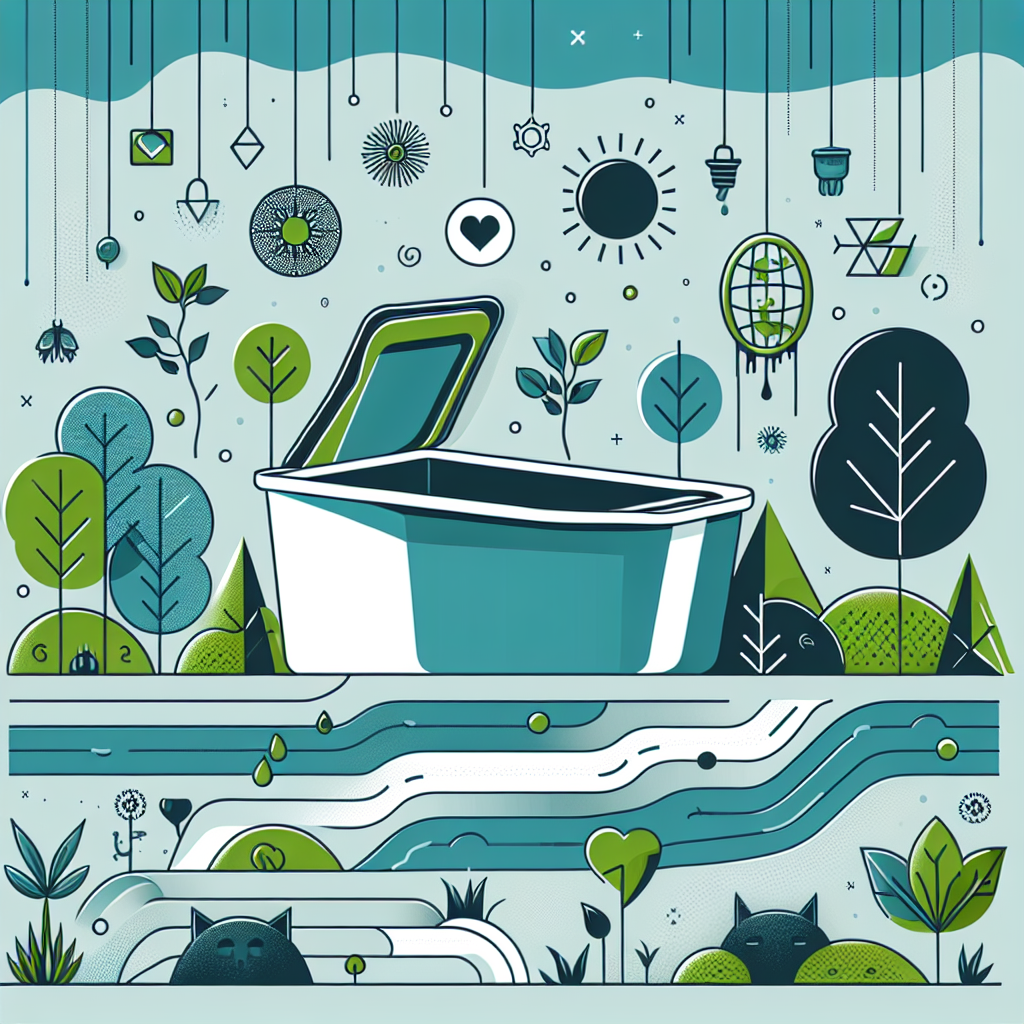
The Environmental Impact of Self-Cleaning Litter Boxes
Share
The Environmental Impact of Self-Cleaning Litter Boxes
As the world becomes more eco-conscious, pet owners are paying attention not only to the products they purchase for themselves, but also for their furry friends. Cat owners, in particular, know how much waste and litter can accumulate in households with feline companions. One innovation that has gained noticeable traction in the pet care industry is the self-cleaning litter box. This article will analyze the environmental impact self cleaning litter box devices have compared to traditional litter boxes and why they may be a sustainable option for modern households.
Traditional Litter Boxes and Their Environmental Impact
The conventional litter box has been a pet care staple for decades. While inexpensive and simple, traditional litter boxes do carry a significant environmental downside. They often require:
- High litter usage: Owners tend to dump the entire litter supply frequently, leading to overconsumption.
- Excess landfill waste: Clay-based litters in particular are non-biodegradable and occupy space in landfills.
- Frequent plastic bag usage: Scooping daily often involves single-use plastic bags to dispose of waste.
- Dust and chemical issues: Many clumping litters contain silica or chemical additives, which negatively affect air quality in homes and can harm the environment during production and disposal.
With millions of cats worldwide, the cumulative environmental footprint of traditional litter boxes is substantial. This makes exploring alternatives an urgent priority.
The Rise of Self-Cleaning Litter Boxes
Self-cleaning litter boxes represent a technological leap in pet care. They are designed to automatically separate waste from clean litter, reducing the frequency of complete litter replacement and minimizing unnecessary waste. These modern systems are particularly attractive for busy pet owners, but their environmental implications are equally worth discussing.
Positive Environmental Impacts of Self-Cleaning Litter Boxes
Understanding the environmental impact self cleaning litter box
- Reduced litter waste: Since the device separates only the soiled clumps, owners need to replace litter less often. This means less litter production, packaging, and transport emissions across the supply chain.
- Lower landfill contributions: Many self-cleaning litter boxes support biodegradable or natural litters, which decrease non-biodegradable landfill waste.
- Minimized plastic usage: Frequent bag usage is reduced, as waste can be collected in sealed bins emptied less frequently.
- Improved air quality inside homes: Reduced manual scooping minimizes airborne dust particles and contact with harmful chemicals, indirectly benefiting the environment by lowering household contaminant exposure.
Considerations and Challenges
Despite the benefits, there are some considerations regarding the sustainability of these automated devices:
- Energy consumption: Self-cleaning litter boxes require electricity to operate. Although the energy used is minimal, it still adds to their footprint.
- Manufacturing resources: Creating these machines involves more plastic, electronics, and manufacturing energy compared to a simple plastic litter tray.
- Durability: A poorly made device may have a short lifespan, contributing to e-waste if it needs to be replaced frequently.
That said, careful product choices can significantly offset these concerns. Investing in a durable device known for efficiency can ensure long-term environmental and personal gains.
How to Maximize the Eco-Friendliness of Your Self-Cleaning Litter Box
If you want to reduce the environmental impact of your pet care routine, here are some practical steps when using a self-cleaning litter box:
- Choose eco-friendly litter: Opt for biodegradable or sustainable options such as wheat, corn, or wood-based litters rather than clay-based alternatives.
- Maintain efficiency: Regularly clean the mechanisms of your self-cleaning litter box to ensure energy efficiency and prevent premature breakdown.
- Empty waste bins responsibly: Use compostable bags when disposing of waste if your local regulations permit them.
- Invest in durability: Pick a high-quality model that will last years, minimizing e-waste and reducing replacement frequency.
Featured Product: A Smarter, Sustainable Solution
For cat owners who want both convenience and reduced environmental impact, one standout option is the Automatic Sandbox for Cats Toilet Self Cleaning Litter Box. This innovative device automatically removes waste, helping to cut down on litter usage while maintaining a hygienic environment for your cat. By reducing how often litter needs to be replaced, this system not only makes life easier for pet parents but also lowers your footprint on the environment.
Built with durability and user convenience in mind, this product helps balance comfort, cleanliness, and eco-friendliness. For households looking to adopt greener practices without sacrificing pet care, it offers a smart choice.
Long-Term Environmental Advantages
Widespread adoption of self-cleaning litter boxes could make a noticeable difference in global waste reduction related to pet care. Consider these potential long-term benefits:
- Less mining of clay for traditional litter production, reducing destructive extraction activities.
- A gradual decrease in the number of single-use bags ending up in landfills.
- Encouragement of sustainable litter material development as demand grows for eco-friendly cat care solutions.
- Extended lifespans of modern devices mean fewer litter boxes discarded over time compared to cheap plastic trays that crack and need replacing.
Each of these outcomes contributes to shaping a more sustainable future, not only for cats and their owners, but also for the planet as a whole.
Conclusion
The environmental impact self cleaning litter boxAutomatic Sandbox for Cats Toilet Self Cleaning Litter Box ensures you are not only simplifying pet care but also contributing to environmental sustainability.
As our society seeks eco-conscious living solutions, even small changes matter. Switching to a self-cleaning litter box is a practical step cat owners can take toward reducing their environmental impact—benefiting both their pets and the planet.
Meta description: Discover the environmental impact self cleaning litter box solutions have and how they reduce waste. Learn why they're eco-friendly for cats and owners alike.
```
